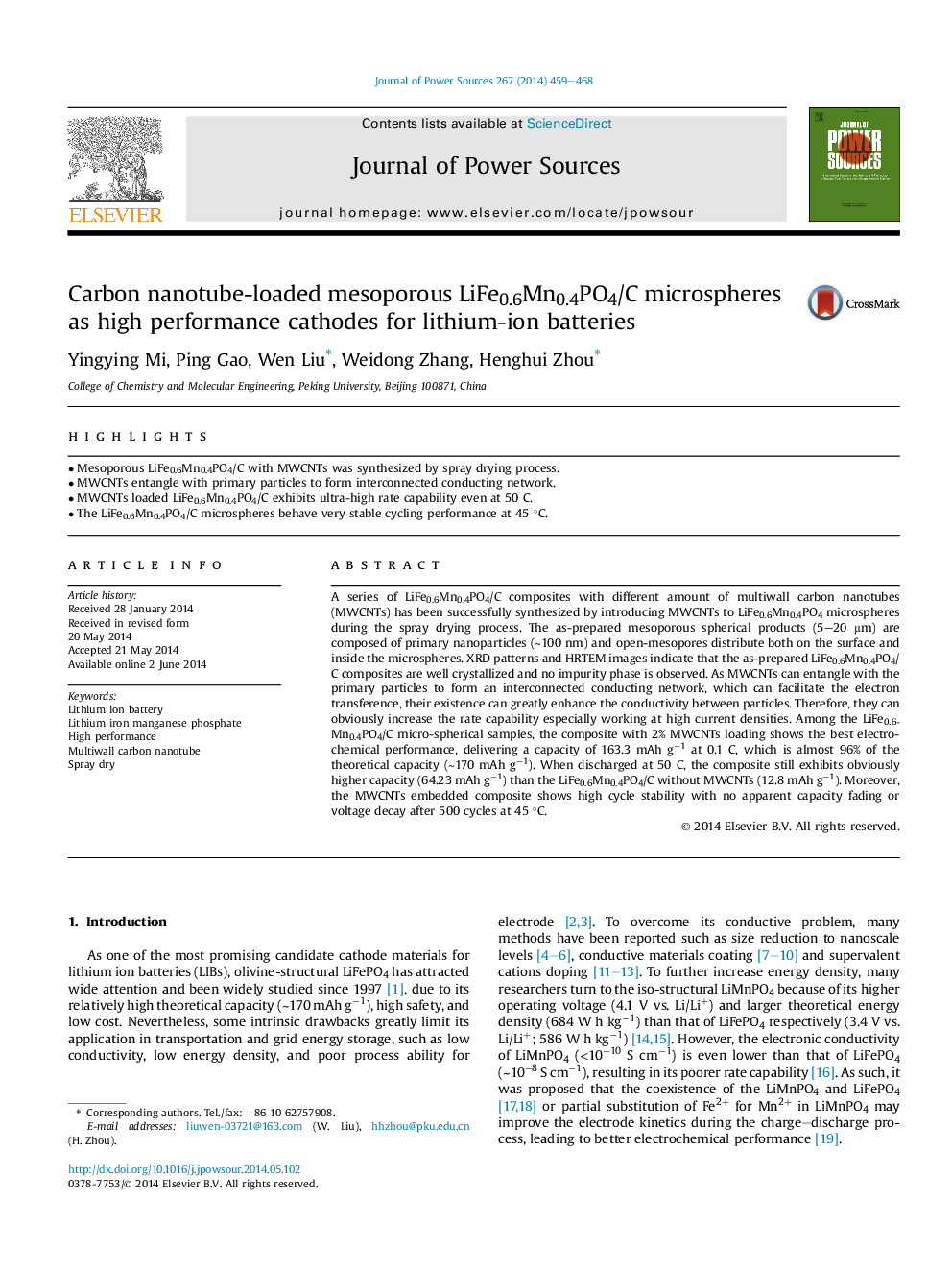| Article ID | Journal | Published Year | Pages | File Type |
|---|---|---|---|---|
| 1286622 | Journal of Power Sources | 2014 | 10 Pages |
•Mesoporous LiFe0.6Mn0.4PO4/C with MWCNTs was synthesized by spray drying process.•MWCNTs entangle with primary particles to form interconnected conducting network.•MWCNTs loaded LiFe0.6Mn0.4PO4/C exhibits ultra-high rate capability even at 50 C.•The LiFe0.6Mn0.4PO4/C microspheres behave very stable cycling performance at 45 °C.
A series of LiFe0.6Mn0.4PO4/C composites with different amount of multiwall carbon nanotubes (MWCNTs) has been successfully synthesized by introducing MWCNTs to LiFe0.6Mn0.4PO4 microspheres during the spray drying process. The as-prepared mesoporous spherical products (5–20 μm) are composed of primary nanoparticles (∼100 nm) and open-mesopores distribute both on the surface and inside the microspheres. XRD patterns and HRTEM images indicate that the as-prepared LiFe0.6Mn0.4PO4/C composites are well crystallized and no impurity phase is observed. As MWCNTs can entangle with the primary particles to form an interconnected conducting network, which can facilitate the electron transference, their existence can greatly enhance the conductivity between particles. Therefore, they can obviously increase the rate capability especially working at high current densities. Among the LiFe0.6Mn0.4PO4/C micro-spherical samples, the composite with 2% MWCNTs loading shows the best electrochemical performance, delivering a capacity of 163.3 mAh g−1 at 0.1 C, which is almost 96% of the theoretical capacity (∼170 mAh g−1). When discharged at 50 C, the composite still exhibits obviously higher capacity (64.23 mAh g−1) than the LiFe0.6Mn0.4PO4/C without MWCNTs (12.8 mAh g−1). Moreover, the MWCNTs embedded composite shows high cycle stability with no apparent capacity fading or voltage decay after 500 cycles at 45 °C.
